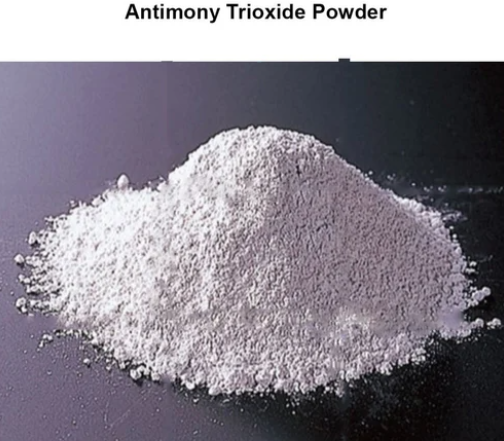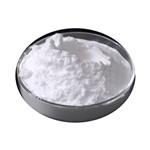Diantimony trioxide: Chemical property and Uses
Aug 30,2024
Introduction
Diantimony trioxide (Antimony trioxide), a white crystalline solid, is insoluble in water. The primary hazard is the environmental threat, and Immediate steps should be taken to limit its spread to the environment. It is used to fireproof fabrics, paper and plastics, as a paint pigment and for many other uses.

Chemical property
Diantimony trioxide is formed as a white smoke by roasting antimony sulfide in a limited supply of air:

When roasting is conducted in excess air, the nonvolatile tetroxide is formed:

The tetroxide is a double oxide of Sb2O3 and Sb2O5, better represented as SbIIISbVO4. Both Sb2O3 and Sb2O5 hydrate yield the tetroxide when heated in air at 800–900 °C. The oxides and oxide hydrates are insoluble in water. Antimony trioxide is insoluble in dilute H2SO4 and HNO3 but dissolves in HCl. It also dissolves in alkalis to form antimonites. The alkali antimonates, e.g., NaSb(OH)6, obtained by the oxidation of the antimonites, are insoluble in water.
The antimony trioxide structure varies depending on the temperature of the sample. For instance, dimeric Sb4O6 is discovered under high temperatures. Dimeric Sb4O6 is the high temperature (1560 °C) gas. The Sb4O6 molecules appear as bicyclic cages that look the same as related oxides of phosphorous trioxide and phosphorous (III). This cage structure is maintained in a cubic habit. A more stable orthorhombic form with pairs of Sb-O chains is discovered if the compound is exposed to temperatures below 606 °C.
Uses
Antimony trioxide (ATO) is commonly used as a co-synergist with halogenated flame retardants to enhance their effectiveness.
In Canada, antimony trioxide is primarily used with other compounds to provide flame-retardant properties. Flame retardants used in household items such as mattress covers, furniture and carpets may contain antimony trioxide.
Antimony trioxide is also used in the manufacturing of a plastic material known as polyethylene terephthalate (PET).
Toxicity
Diantimony trioxide is a mild primary eye irritant in rabbits. Rat oral LD50>34 g kg−1. Mouse intraperitoneal LD50=172 mg kg−1. The in vivo genotoxicity of antimony trioxide was studied using single and repeat dose mouse bone marrow micronucleus tests and the rat liver unscheduled DNA synthesis assay. All three studies were negative. In contrast, chromosomal damage by antimony trioxide was reported in mouse bone marrow cells after repeat dosing but not after single dosing. This discrepancy with respect to repeat dosing may be explained by the ‘not specified purity’ and much higher systemic toxicity of the antimony trioxide sample used in one study; for this reason and because of the poor water solubility of antimony trioxide, it has been concluded that antimony trioxide was not genotoxic in vivo.
Eye and respiratory irritation occur due to antimony exposure. Normal human serum levels of antimony should be from 0.05 to 0.50 mg dl−1.
Antimony trioxide has been classified by the American Conference of Governmental Industrial Hygienists (ACGIH) as group A2, a suspected human carcinogen and by the International Agency for Research on Cancer into group B2 (potential carcinogen). In a rat study, doses of antimony trioxide as high as 4.5 mg m−3 delivered by inhalation for 12 months did not produce cancer. However, other studies did show increased lung tumours in rats exposed to 4.2 mg m−3 antimony trioxide 6 h day−1, 5 days week−1 for 1 year. The inconsistencies in the animal studies and a lack of strong evidence in humans are the reasons behind these classifications. Studies done by Health Canada suggest that ATO could be a ‘threshold carcinogen.’ It may not cause lung tumours due to DNA effects but due to impaired lung clearance, particle overload, and subsequent inflammatory response leading to fibrosis and tumour formation.
References
[1] Antimony Trioxide - an overview | ScienceDirect Topics https://www.sciencedirect.com/topics/engineering/antimony-trioxide
[2] Antimony Trioxide - an overview | ScienceDirect Topics https://www.sciencedirect.com/topics/chemistry/antimony-trioxide
- Related articles
- Related Qustion
UV-329, a benzotriazole UV stabilizer, enhances durability but raises toxicity concerns, with its removal in SBRs showing limited efficiency, impacting environmental and health safety.....
Aug 30,2024APIPrometryn is used as a pre-and postemergent agricultural herbicide (0.5–3.5 kg ha? 1) for the control of annual broadleaf and grass weeds in cotton production and crops.....
Aug 30,2024Chemical pesticides ?Diantimony trioxide
1309-64-4You may like
- Why is Phosphoric acid used in food?
Aug 2, 2024
- Synthesis of Aluminium potassium sulfate dodecahydrate (Alum)
Aug 1, 2024
- Malachite synthesis
Jul 31, 2024
Diantimony trioxide manufacturers
- Diantimony trioxide
-

- $6.00 / 1kg
- 2024-08-30
- CAS:1309-64-4
- Min. Order: 1kg
- Purity: 99%
- Supply Ability: 2000KG/Month
- Diantimony trioxide
-

- $30.00 / 1kg
- 2024-08-30
- CAS:1309-64-4
- Min. Order: 10kg
- Purity: 98%
- Supply Ability: 2000kg
- Diantimony trioxide
-

- $0.00 / 1kg
- 2024-08-28
- CAS:1309-64-4
- Min. Order: 1kg
- Purity: 99%
- Supply Ability: 1000000




